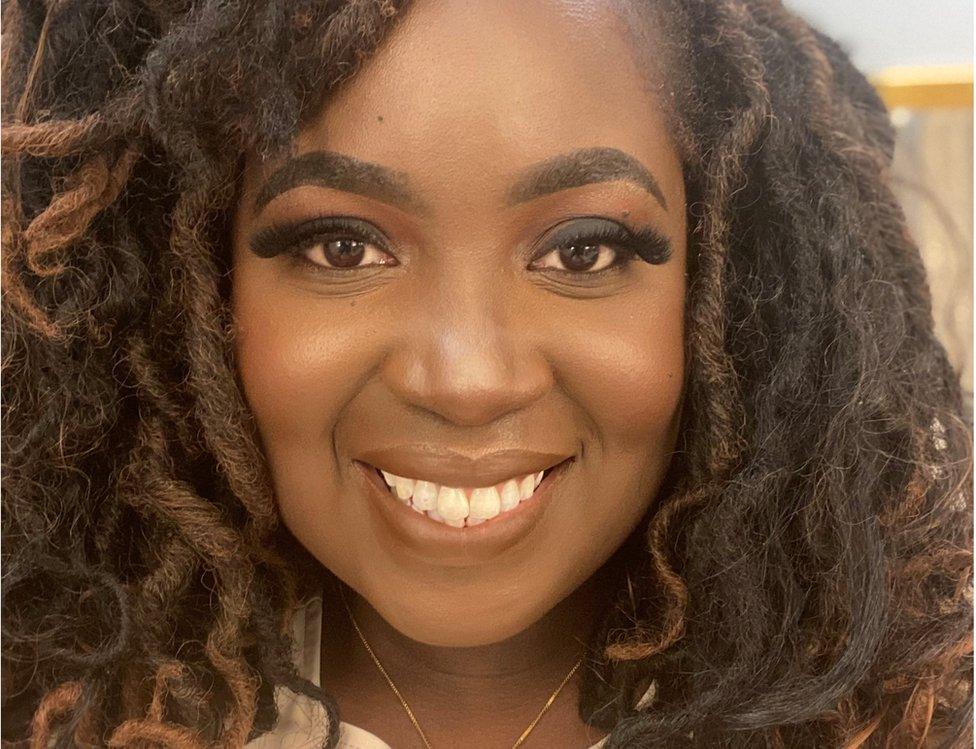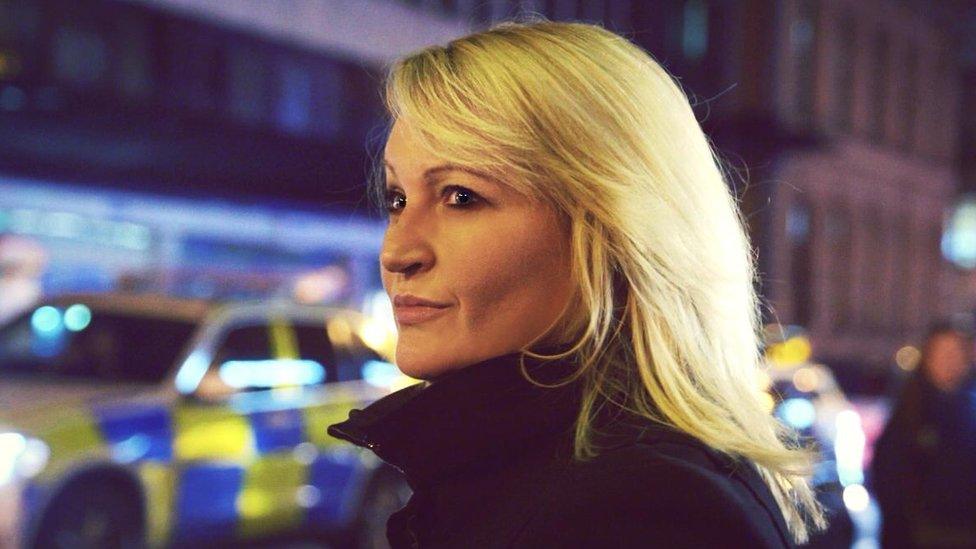Women in 20s told 'get pregnant' to ease endometriosis symptoms
- Published

Sophie Buchan was told to get pregnant as a way of controlling her pain
Women in their early 20s are still being told to "get pregnant" as a way of treating the debilitating gynaecological condition endometriosis.
Experts have criticised GPs for lack of understanding of the disease which affects one in 10 women.
They are calling for more research and awareness for the condition that has few treatments and no cure.
The shocking advice was given to 22-year-old Glasgow journalist Sophie Buchan last year.
She told the BBC Radio's Good Morning Scotland programme she was shocked.
"Last year I had a really bad flare-up," she said. "I was just in pain, I couldn't move. So I went to my GP and he told me to get pregnant. I was 21.
"He just said that a lot of women tend to find that their symptoms are better after they get pregnant. I was just really angry, to be honest."
'Pregnancy not a cure or treatment'
Prof Andrew Horne, a leading expert on endometriosis at the University of Edinburgh, disagrees with the suggestion.
"That is awful," he said. "I think it's a thing we had hoped as gynaecologists was out of date and was not happening. We shouldn't be telling people to get pregnant for any reason that improves their health and for the other reason that it is simply not true.
"We know patients' symptoms get better during pregnancy but it is definitely not a cure or a treatment."

What is endometriosis?
The condition means cells such as the ones in the lining of the womb (uterus) are found elsewhere in the body.
Each month these cells react in the same way to those inside the womb - building up, then breaking down and bleeding, but with no way to escape.
Painful periods are just one of the potential symptoms, which can also include pain during sex, heavy, prolonged or irregular periods, pain when passing urine, symptoms of irritable bowel, back and leg pain, fatigue, infertility and depression. Surgery can also cause adhesions - which are bands of scar tissue that can bind two organs together.
Because some symptoms are shared by other illnesses, diagnosis is very difficult. On average, it takes almost eight years between a woman first seeing a doctor about their symptoms and receiving a firm diagnosis.
The cause is unknown and there is no definitive cure.

Faye Farthing is the campaigns manager for Endometriosis UK.
She said "Comments such as 'just get on with it', 'the pain is all in your head', or even myths such as 'just get pregnant and your endometriosis will be cured', must become a thing of the past if we are to ensure those with endometriosis are accessing the support they need to manage this condition, and to reduce diagnosis time which currently averages at a shocking 8.5 years in Scotland. There is no cure for endometriosis, and it's time to call an end to such myths."
During endometriosis awareness month, there is also a call for more research and awareness among women with endometriosis from Scotland's black, Asian and ethnic minority communities.
Scottish broadcaster Afua Adom has had really bad symptoms since she was 15 and was finally diagnosed at the age of 25.

Afua Adom worries about the amount of painkillers she takes to manage her condition
She said: "I have been on painkillers every single day since I started getting symptoms, whether that is paracetamol, mefenamic acid naproxen, ibuprofen or co-codamol.
"You name it - I've thrown it at the situation. And I have not had less than two paracetamol every single day of my life since then."
It took 10 years for Afua to get a diagnosis, and that is not uncommon.
She is now worried about the number of painkillers she is taking just to keep going.
"It's absolutely shocking. I mean, what are your options?," she said. "You take painkillers every day, like I do. You have invasive laser surgery, which I had and perforated my bowel. And then it comes back so you have another surgery, you have another incision, and it comes back.
"There is no effective treatment, there is no effective cure. Essentially we are being told this is a horrible thing that happens inside of your body - go away and deal with it."
About 1.5m UK women are dealing with it, including radio presenter Katy Johnston, 25, from Glasgow.
She was put into a chemical menopause in an attempt to ease her pain.

Katy Johnston has had the menopause induced to help the symptoms of endometriosis
She said: "A 22-year-old should not know what it feels like to be kept up all night with hot flushes. But for me it was a case of menopause or crippling pain, can't get out of bed, can't function. At this point I was so poorly I hadn't left the house in months, I had to drop out of my postgrad in journalism. My quality of life was just zero."
Another issue flagged up by campaigners is a lack of research among BAME communities.
Afua Adom said: "We need to know how it affects black and Asian women differently and how long it takes them to get a diagnosis, how it ties in with fibroids and is it more prevalent and how the two sit together in the body.
Prof Horne agrees this is an area that needs inspection.
"I run a number of research studies and we would like hear from the BAME community and make sure everybody gets involved, not just a subset of the population," he said.
- Published28 February 2020

- Published15 June 2018
